Lukla Airport of Nepal
As the popularity of trekking and mountaineering in the Everest region grew, the Lukla airport evolved to accommodate increasing numbers of tourists.
As the popularity of trekking and mountaineering in the Everest region grew, the Lukla airport evolved to accommodate increasing numbers of tourists.
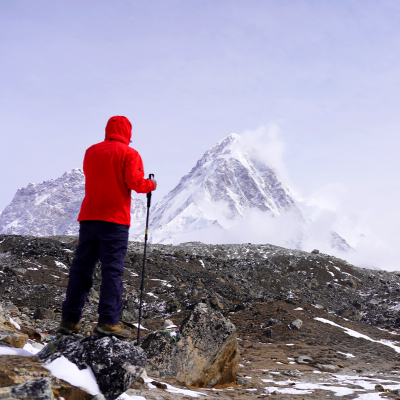
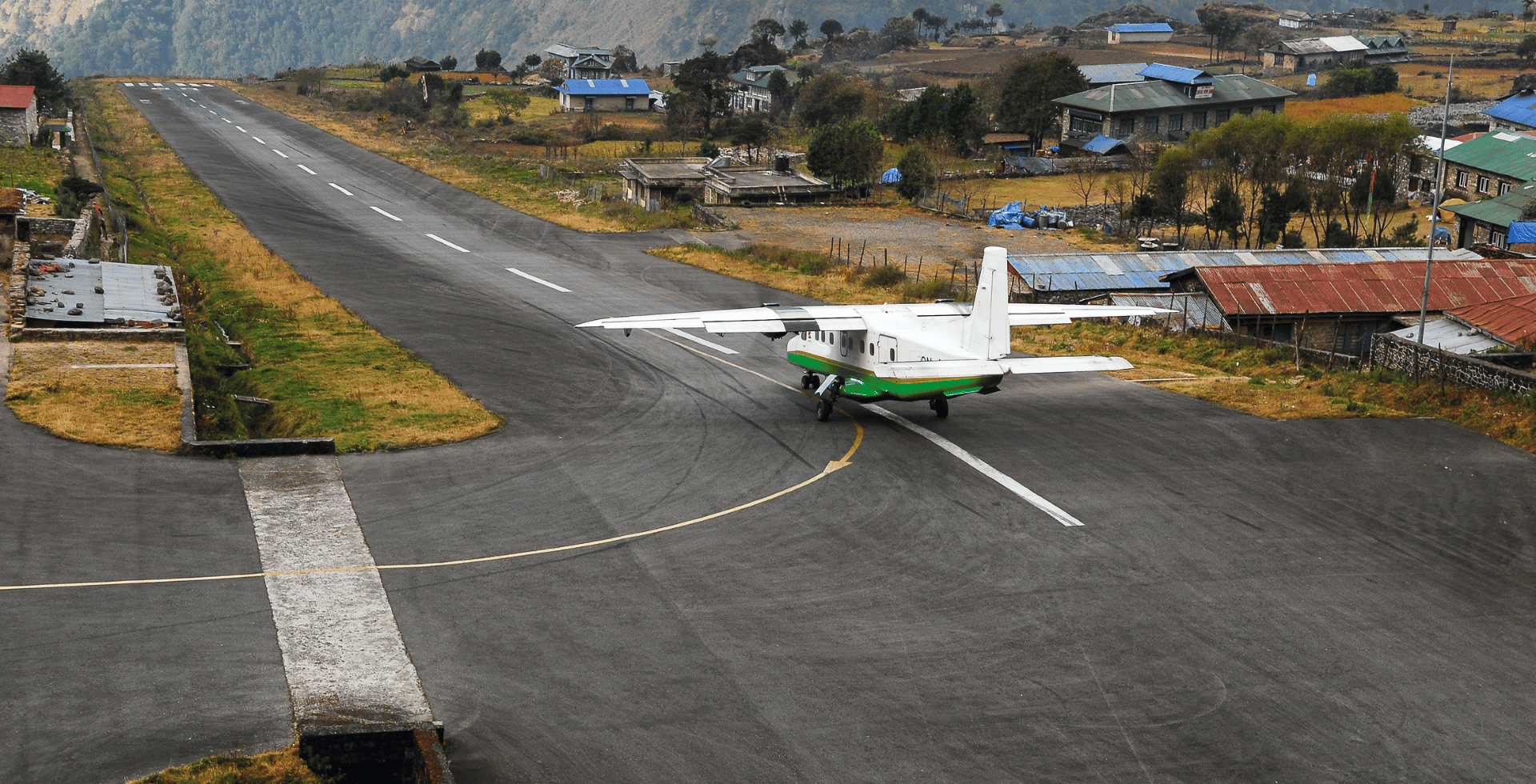
Lukla Airport, officially known as Tenzing-Hillary Airport, is a small yet significant airport located in the Solu-Khumbu region of Nepal. Nestled at an altitude of 2,845 meters (9,334 feet) above sea level, it serves as the primary gateway for trekkers and mountaineers seeking to explore the breathtaking Everest region. Named in honor of Sir Edmund Hillary and Tenzing Norgay, the first climbers to successfully summit Mount Everest, the airport is a testament to their enduring legacy.
Despite its small size, Lukla Airport is renowned for its thrilling landing experience and has gained a reputation as one of the most dangerous airports in the world. The combination of its high altitude, short runway, and unpredictable weather conditions make it a challenging destination for pilots and a thrilling adventure for travelers. The airport plays a crucial role in the local economy, as it facilitates tourism and provides vital access to the remote region for both locals and visitors alike.
Lukla Airport holds immense importance in the context of the Everest region for several reasons:
Primary access point: The airport serves as the primary access point for travelers, trekkers, and mountaineers seeking to explore the Everest region. Most expeditions to Mount Everest and its surrounding peaks, as well as treks to the popular Everest Base Camp, begin in Lukla. The airport's strategic location makes it an essential hub for both international and domestic travelers.
Tourism boost: The airport has played a significant role in promoting tourism in the Everest region. By providing easy access to the area, it has allowed for the growth of a vibrant tourism industry, with visitors coming to experience the majestic landscapes, unique culture, and challenging treks. This influx of tourists has contributed to the local economy, creating job opportunities and supporting the development of infrastructure.
Vital lifeline for locals: Lukla Airport is not only important for tourists but also serves as a lifeline for the local population. The remote and rugged terrain of the region makes transportation difficult, and the airport enables the transport of essential goods, medical supplies, and equipment. It also allows locals to travel more easily, connecting them to the rest of Nepal and beyond.
Emergency and rescue operations: The airport is crucial for emergency and rescue operations in the Everest region. Given the high-risk nature of mountaineering and trekking in the area, accidents and medical emergencies can occur. Lukla Airport serves as a vital base for helicopters and small aircraft to carry out rescue missions and transport injured or sick individuals to medical facilities in Kathmandu or elsewhere.
Cultural exchange: Lukla Airport facilitates cultural exchange by connecting the remote and culturally rich Everest region with the rest of the world. It allows travelers to experience the unique traditions, customs, and lifestyle of the Sherpa people, fostering a greater understanding and appreciation of their culture.
Lukla Airport is an indispensable asset to the Everest region, playing a vital role in supporting tourism, local communities, and emergency services. Its significance extends far beyond its reputation as a thrilling and dangerous airport; it is truly the gateway to the Everest experience.
Lukla Airport, also known as Tenzing-Hillary Airport, has gained a reputation as one of the most dangerous airports in the world. This notoriety can be attributed to several factors that contribute to the challenging nature of flying in and out of the airport:
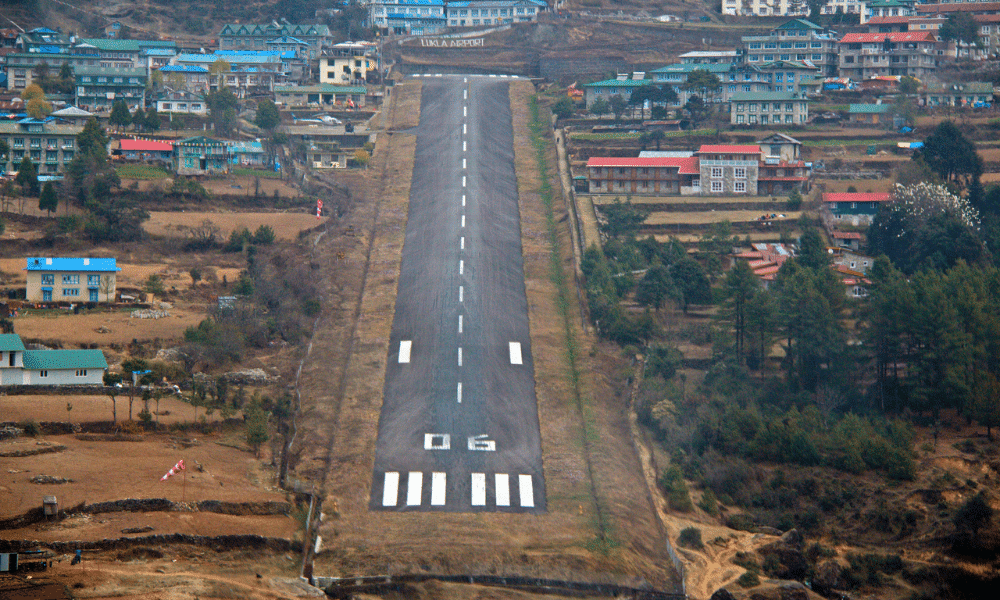
Short runway: The runway at Lukla Airport is exceptionally short, measuring only 527 meters (1,729 feet) in length. This leaves very little room for error during takeoff and landing, requiring pilots to execute precise maneuvers to ensure the aircraft safely stops or lifts off within the available distance.
Steep incline: The runway has a gradient of 11.7%, creating a significant uphill slope during landing and a downhill slope during takeoff. This unique feature adds an extra layer of complexity for pilots as they must carefully manage their aircraft's speed and angle of approach.
Mountainous terrain: The airport is nestled in the heart of the Himalayas, surrounded by towering peaks and steep valleys. The mountainous terrain limits pilots' maneuverability, making it crucial for them to maintain an accurate flight path to avoid collisions with the rugged landscape.
Unpredictable weather: The Everest region is known for its rapidly changing and often extreme weather conditions. Lukla Airport is no exception, with poor visibility, strong winds, and rapidly forming cloud cover posing significant risks to pilots. Flights are often delayed or canceled due to unfavorable weather conditions, as the airport only operates under visual flight rules (VFR).
High altitude: At an elevation of 2,845 meters (9,334 feet) above sea level, Lukla Airport is situated at a considerably high altitude. The reduced air density at such elevations can affect aircraft performance and make it more challenging for pilots to control their planes during takeoff and landing.
Despite its reputation as a dangerous airport, Lukla Airport maintains a relatively low accident rate, largely due to the skill and expertise of the pilots who fly there. These pilots undergo specialized training and possess extensive experience navigating the demanding conditions that make this airport so notorious.
Lukla Airport, now known as Tenzing-Hillary Airport, was founded in 1964. Before the construction of the airport, the only way to access the Everest region was through several days of arduous trekking from the nearest road.
The airport owes its existence to the efforts of Sir Edmund Hillary, one of the first climbers to summit Mount Everest along with Tenzing Norgay. Recognizing the need for easier access to the region, Sir Edmund Hillary took it upon himself to find a suitable location to build an airstrip.
With the help of funds raised by the Himalayan Trust, which was founded by Hillary in 1960, the construction of the airport began. Although Tenzing Norgay was not directly involved in the airport's construction, his historic partnership with Sir Edmund Hillary on their Everest ascent led to the airport being named in honor of both climbers.
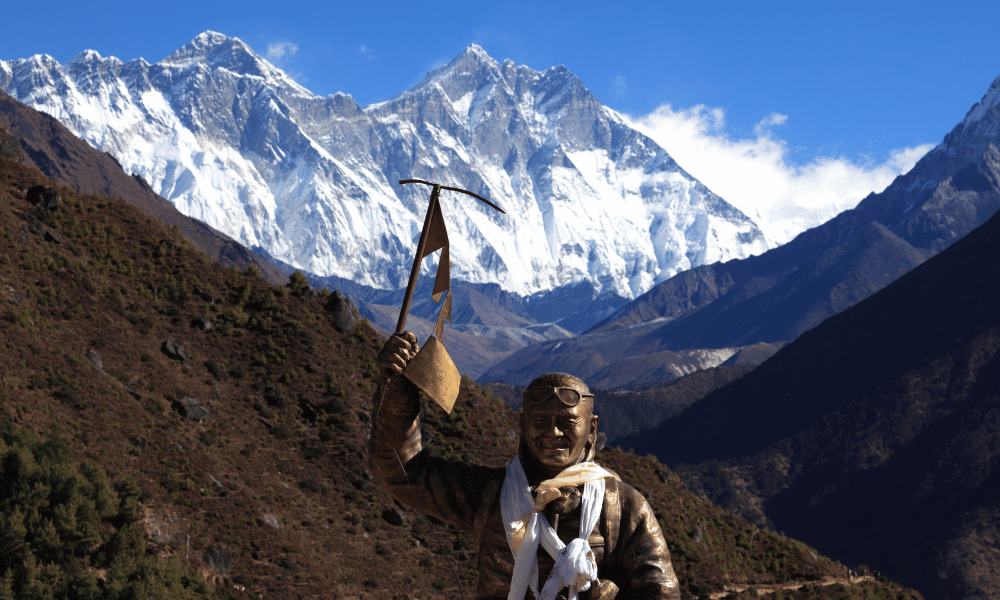
The initial purpose of Lukla Airport was to provide a more accessible entry point to the Everest region, primarily for mountaineers and trekkers. Over time, the airport also became a crucial lifeline for the local community, allowing for the transportation of essential goods and medical supplies to the remote region.
As the popularity of trekking and mountaineering in the Everest region grew, the airport evolved to accommodate increasing numbers of tourists. The original grass airstrip was replaced with a paved runway in 2001, and a weather station was installed to improve flight safety. The airport has also seen upgrades in communication and navigation equipment, further enhancing its ability to operate safely under challenging conditions.
Today, Tenzing-Hillary Airport remains a vital hub for both the local community and the ever-growing tourism industry in the Everest region. Despite its dangerous reputation, it continues to attract adventure-seekers from around the world, drawn by the allure of the Himalayas and the thrill of flying into one of the world's most challenging airports.
Tenzing-Hillary Airport, previously known as Lukla Airport, was renamed in 2008 to honor Tenzing Norgay and Sir Edmund Hillary, the first climbers to successfully summit Mount Everest in 1953. The decision to name the airport after these two legendary mountaineers reflect their historic achievement and the profound impact they had on the region.
The renaming of the airport serves as a lasting tribute to Tenzing Norgay and Sir Edmund Hillary, whose bravery, determination, and pioneering spirit continue to inspire countless climbers and adventurers. Their successful ascent of Mount Everest marked a significant milestone in the history of mountaineering and brought worldwide attention to the beauty and challenges of the Himalayas. By naming the airport after these two iconic figures, the airport underscores the importance of their achievements and their connection to the Everest region.
Tenzing-Hillary Airport holds immense importance for both the local community and the tourism industry in the Everest region. For the local population, the airport provides a vital connection to the rest of Nepal and the world, enabling the transportation of essential goods, medical supplies, and other necessities. It also allows the Sherpa people and other residents to travel more easily, fostering economic development and access to education and healthcare services.
In terms of tourism, the airport serves as the primary access point for travelers, trekkers, and mountaineers eager to explore the Everest region. Its presence has contributed significantly to the growth of the local tourism industry, creating job opportunities and supporting the development of infrastructure, such as lodges, teahouses, and restaurants. The thriving tourism sector, in turn, has brought financial benefits to the region and helped raise awareness of the unique culture and natural beauty of the area.
The naming of Tenzing-Hillary Airport honors the legacy of the first Everest summiteers while also highlighting its significance as a gateway to the Everest region, supporting both the local community and the tourism industry.
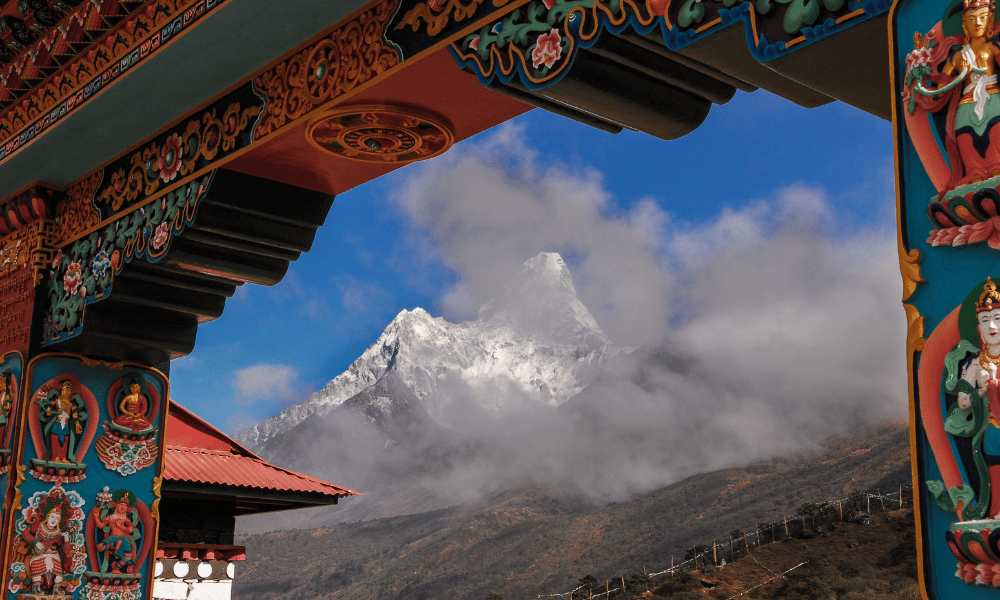
Lukla Airport, or Tenzing-Hillary Airport, is situated at an elevation of 2,845 meters (9,334 feet) above sea level. The high altitude location presents unique challenges for both the runway design and aircraft performance.
The runway at Lukla Airport has several unique features that make it particularly challenging for pilots:
Short length: The runway measures only 527 meters (1,729 feet) in length, which is considerably shorter than the typical length of runways at commercial airports. This short distance requires pilots to execute precise maneuvers during takeoff and landing, ensuring the aircraft can safely stop or lift off within the available distance.
Steep incline: The runway has a gradient of 11.7%, creating a significant uphill slope when landing and a downhill slope during takeoff. This steep incline helps to slow down aircraft during landing and assists in generating lift during takeoff, but it also adds an extra layer of complexity for pilots, who must carefully manage their aircraft's speed and angle of approach.
Mountainous surroundings: The airport is surrounded by high mountains, with a sheer drop at the end of the runway. These dramatic topographical features require pilots to navigate with extreme caution, as there is limited room for error in the event of a missed approach or aborted landing.
The high elevation of Lukla Airport has a significant impact on aircraft performance:
Reduced air density: At high altitudes, the air density is lower, which can result in reduced engine power, decreased lift, and longer takeoff distances. Pilots must carefully manage their aircraft's speed and power settings to compensate for these performance differences.
Impact on aerodynamics: Lower air density at high altitudes can also affect the aerodynamics of an aircraft, leading to changes in handling characteristics and stall speeds. Pilots need to be aware of these differences and make appropriate adjustments to their flying techniques.
Limited aircraft choice: The combined challenges of the short runway, steep incline, and high altitude mean that only specific types of aircraft, such as small turboprop planes, are capable of operating at Lukla Airport. These aircraft are specifically designed to perform well under such challenging conditions.
Oxygen levels and human performance: High altitude can also affect human performance, as the reduced oxygen levels can lead to altitude sickness or hypoxia. Pilots and passengers alike need to be aware of the potential impact of altitude on their bodies and take necessary precautions.
The high elevation of Lukla Airport presents unique challenges for both the runway design and aircraft performance. The combination of a short, steeply inclined runway and the impact of altitude on aircraft and human performance make flying in and out of Lukla a demanding endeavor, requiring specialized aircraft and experienced pilots.
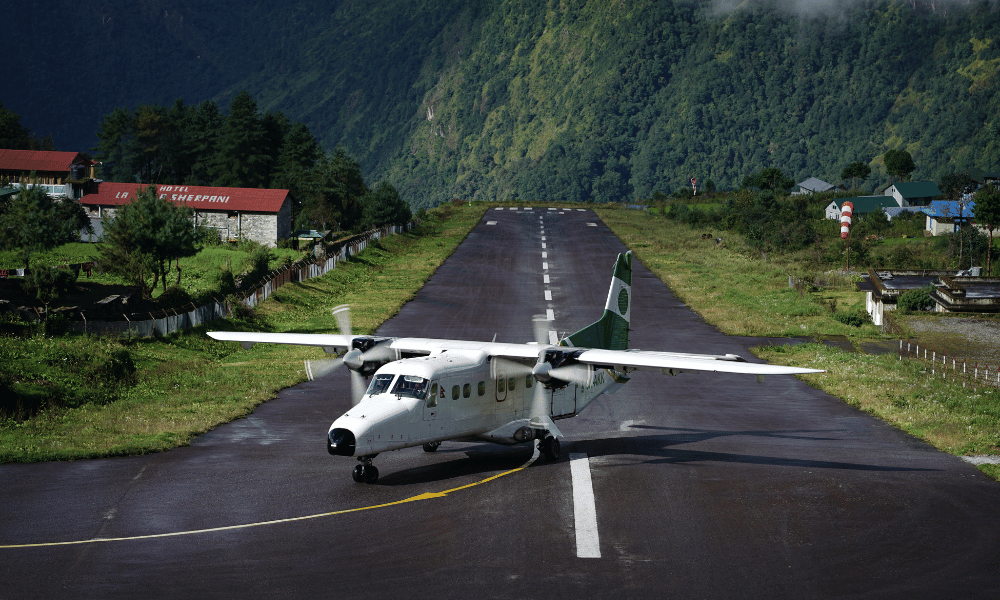
Weather conditions in the Everest region, including the area surrounding Lukla Airport, are known for their unpredictability and frequent changes. The high mountains create a unique microclimate that can be challenging to forecast and navigate.
Temperature: The region experiences a wide range of temperatures, with daytime highs being relatively mild and nighttime temperatures dropping significantly. The temperature varies throughout the year, with the warmest months typically occurring between May and September, while the colder months extend from November to February.
Monsoon season: The Everest region, including Lukla, is affected by the annual monsoon season, which typically lasts from June to September. During this time, the area experiences heavy rainfall, reduced visibility, and an increased risk of landslides.
Dry season: The dry season usually extends from October to May, with the clearest and most stable weather occurring in the pre-monsoon months of March to May and the post-monsoon months of October and November. These periods are considered the best times for trekking and mountaineering in the region.
Wind: Strong and unpredictable winds can occur throughout the year, especially at higher altitudes. These winds can cause turbulence during flights and make landing and takeoff at Lukla Airport even more challenging.
Cloud cover and visibility: Rapidly forming clouds and fog are common in the region, which can lead to poor visibility and hamper flight operations. Pilots must rely on visual flight rules (VFR) to navigate in and out of Lukla Airport, making clear visibility a crucial factor for safe operations.
The unpredictable and rapidly changing weather conditions in the Everest region can have significant impacts on the operations and scheduling of flights at Lukla Airport:
Delays and cancellations: Poor visibility, strong winds, or other adverse weather conditions can lead to flight delays or cancellations. As the airport operates under VFR, flights can only take place when weather conditions are suitable for visual navigation.
Limited flying hours: Due to the reliance on VFR, flights to and from Lukla Airport are generally restricted to the early morning hours when the weather is most stable and clear. This limited window of opportunity can further contribute to delays and cancellations.
Contingency planning: Given the potential for weather-related disruptions, travelers planning to fly to or from Lukla Airport should factor in extra time for potential delays or cancellations. It is advisable to have a flexible schedule and be prepared to adjust travel plans accordingly.
The typical weather patterns and the unpredictable nature of the weather in the Everest region can have a significant impact on airport operations and scheduling at Lukla Airport. Travelers should be aware of these potential challenges and plan their trips accordingly.
Due to the unique challenges posed by Lukla Airport's short runway, steep incline, high altitude, and unpredictable weather, only specific types of aircraft are capable of landing there. These aircraft are generally small, rugged, and capable of short takeoff and landing (STOL) performance. The most common types of aircraft used for flights to and from Lukla Airport are:
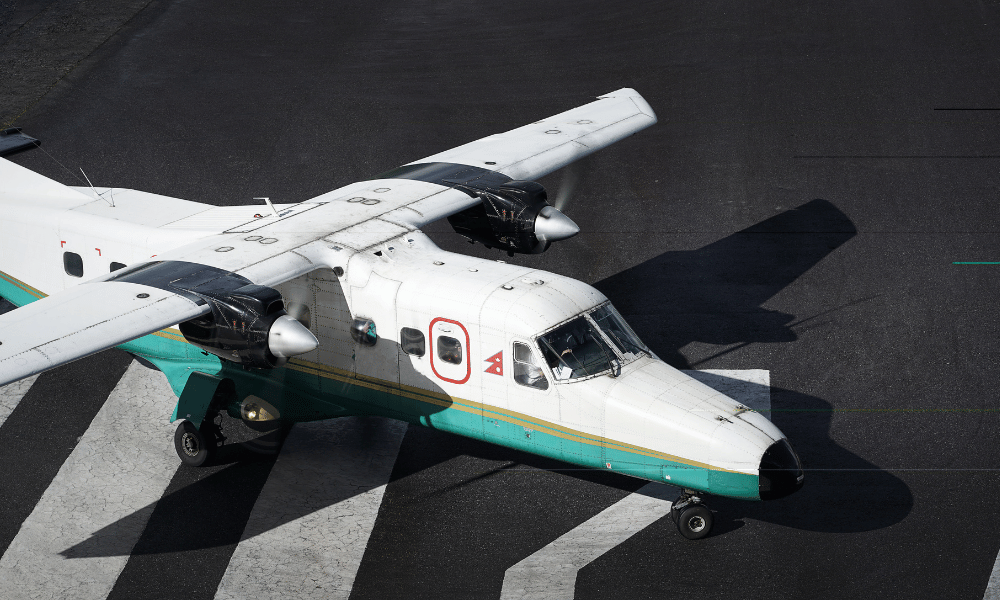
De Havilland Canada DHC-6 Twin Otter: The Twin Otter is a versatile and reliable turboprop aircraft that can accommodate up to 19 passengers. It is well-suited to operate in challenging conditions and is commonly used for flights to Lukla Airport.
Pilatus PC-6 Porter: The PC-6 Porter is a single-engine STOL utility aircraft designed for use in remote and mountainous regions. It has a reputation for excellent performance in high-altitude environments and can carry up to 10 passengers.
Let L-410 Turbolet: The L-410 is a twin-engine turboprop aircraft with a seating capacity of up to 19 passengers. It is designed for short-haul flights and is capable of operating on short and unprepared runways, making it suitable for flights to Lukla.
Several domestic airlines operate regular flights to and from Lukla Airport. The main airlines offering service to Tenzing-Hillary Airport include:
Tara Air: Tara Air is a subsidiary of Yeti Airlines, one of Nepal's leading domestic carriers. They operate a fleet of Twin Otter and Dornier 228 aircraft, providing regular flights between Kathmandu and Lukla.
Summit Air: Summit Air, formerly known as Goma Air, is a Nepalese airline specializing in flights to remote and mountainous regions. They operate a fleet of Let L-410 Turbolet aircraft and provide regular service between Kathmandu and Lukla.
Sita Air: Sita Air is a domestic airline in Nepal that operates flights to various destinations across the country, including Lukla. They operate a fleet of Dornier 228 aircraft, which are well-suited for the challenging conditions at Lukla Airport.
Nepal Airlines: Nepal's national flag carrier, Nepal Airlines, occasionally operates flights to Lukla Airport using their Harbin Y-12 aircraft, which are capable of handling the airport's unique challenges.
These airlines provide the primary air link between Kathmandu and Lukla, connecting the Everest region with the rest of Nepal and the world. Due to the inherent challenges of flying to Lukla, the airlines prioritize safety and employ pilots with specialized training and experience in navigating the demanding conditions of the airport.
Risks and factors contributing to Lukla Airport's dangerous reputation can be attributed to a combination of unique challenges that make flying in and out of the airport a demanding task for pilots. Some of the primary factors include:
Short runway: Lukla Airport's runway is exceptionally short, measuring only 527 meters (1,729 feet) in length. This leaves very little room for error during takeoff and landing, requiring pilots to execute precise maneuvers to ensure the aircraft safely stops or lifts off within the available distance.
Steep incline: The runway has a gradient of 11.7%, creating a significant uphill slope during landing and a downhill slope during takeoff. This unique feature adds an extra layer of complexity for pilots as they must carefully manage their aircraft's speed and angle of approach.
Mountainous terrain: The airport is nestled in the heart of the Himalayas, surrounded by towering peaks and steep valleys. The mountainous terrain limits pilots' maneuverability, making it crucial for them to maintain an accurate flight path to avoid collisions with the rugged landscape.
Unpredictable weather: The Everest region is known for its rapidly changing and often extreme weather conditions. Lukla Airport is no exception, with poor visibility, strong winds, and rapidly forming cloud cover posing significant risks to pilots. Flights are often delayed or canceled due to unfavorable weather conditions, as the airport only operates under visual flight rules (VFR).
High altitude: At an elevation of 2,845 meters (9,334 feet) above sea level, Lukla Airport is situated at a considerably high altitude. The reduced air density at such elevations can affect aircraft performance and make it more challenging for pilots to control their planes during takeoff and landing.
These factors, when combined, contribute to the airport's reputation as one of the most dangerous in the world. Despite this notoriety, Lukla Airport maintains a relatively low accident rate, thanks to the skill and expertise of the pilots who fly there. These pilots undergo specialized training and possess extensive experience navigating the demanding conditions that make this airport so challenging.
Over the years, several safety measures and improvements have been implemented at Lukla Airport to mitigate the risks associated with its challenging conditions. Some of these measures include:
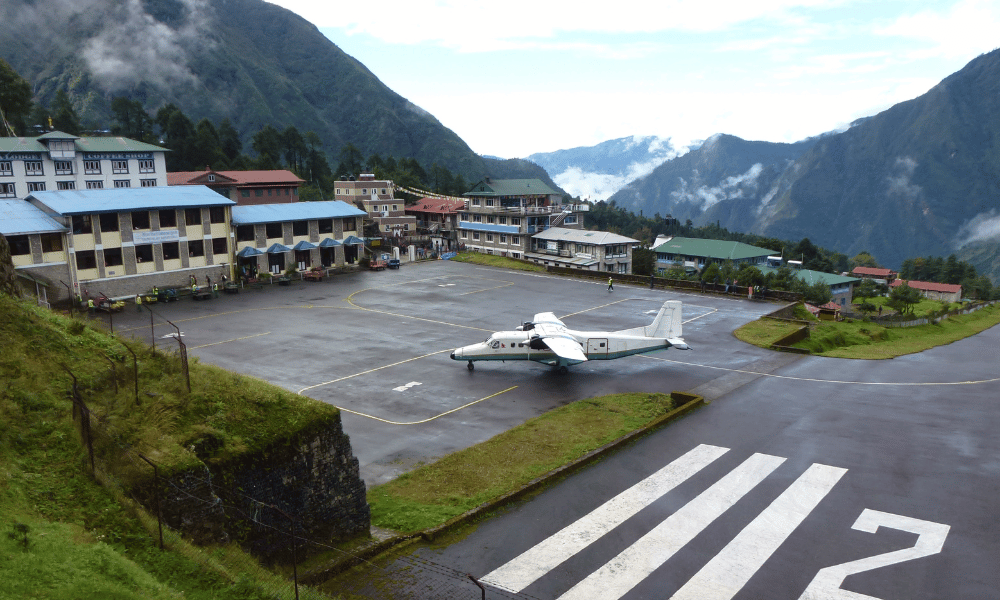
Skilled Pilots and Specialized Training: Pilots flying to and from Lukla Airport are required to have specialized training and experience in flying under the unique conditions posed by the airport. These pilots must demonstrate exceptional skills in handling short takeoffs and landings, navigating mountainous terrain, and operating under rapidly changing weather conditions. This specialized training and expertise help to ensure a higher level of safety during flights to and from Lukla.
Recent Upgrades and Advancements in Technology: To enhance safety at the airport, various upgrades and advancements in technology have been implemented over the years. Some of these improvements include:
Air traffic control: Although Lukla Airport does not have a dedicated air traffic control tower, communication systems have been put in place to assist pilots with coordinating their approach and departure procedures. This helps to reduce the risk of accidents and improve overall safety.
Weather monitoring: Improved weather monitoring equipment has been installed to provide pilots with more accurate and timely information about local weather conditions. This enables pilots to make better-informed decisions about whether it is safe to fly or not.
Runway improvements: The runway at Lukla Airport has been paved and maintained to ensure a safe and stable surface for aircraft during takeoff and landing. Additionally, barriers and fencing have been installed at the edges of the runway to prevent accidental runway excursions.
Navigational aids: Although pilots flying to and from Lukla Airport rely primarily on visual flight rules (VFR), some navigational aids have been installed to assist pilots during periods of reduced visibility. These aids include a non-directional beacon (NDB) and distance measuring equipment (DME).
These safety measures and improvements have helped to mitigate some of the risks associated with flying to and from Lukla Airport. However, it is essential to recognize that the airport's challenging conditions will always present a certain level of risk. As a result, pilots and airlines operating at Lukla Airport must remain vigilant and prioritize safety above all else.
Getting to Lukla Airport involves several options, depending on your preferred mode of transportation, time constraints, and budget. Here are some ways to reach Lukla Airport:
The most common and fastest way to reach Lukla Airport is by taking a domestic flight from Kathmandu's Tribhuvan International Airport. Several domestic airlines, including Tara Air, Summit Air, Sita Air, and occasionally Nepal Airlines, operate regular flights between Kathmandu and Lukla. The flight duration is approximately 30 minutes and offers breathtaking views of the Himalayas. Keep in mind that flights are often subject to weather conditions, and delays or cancellations are common. It is recommended to have a flexible schedule when planning your trip.
Due to increased air traffic and ongoing renovation work at Kathmandu's Tribhuvan International Airport, domestic flights to Lukla are sometimes rerouted through Ramechhap's Manthali Airport (also known as Ramechhap Airport). This small airport is located about 4-5 hours drive east of Kathmandu.
When flights are rerouted through Ramechhap, passengers will need to travel from Kathmandu to Manthali by road, usually arranged by the airline or a trekking agency. Here's what to expect when taking a Lukla flight from Ramechhap Manthali:
Ground transportation: Passengers need to arrange transportation from Kathmandu to Ramechhap, either through their airline, trekking agency, or by booking a private vehicle. The drive takes approximately 4-5 hours, depending on traffic and road conditions.
Early morning departure: Since most flights from Ramechhap to Lukla operate in the early morning hours to avoid unfavorable weather conditions, passengers are often required to leave Kathmandu very early in the morning or even the night before to ensure they arrive at Manthali Airport on time.
Basic airport facilities: Manthali Airport is a small regional airport with limited facilities, including a small waiting area, restrooms, and a check-in counter. It's essential to carry necessary items such as snacks, water, and cash, as there may be limited options available at the airport.
Flight duration: The flight from Ramechhap to Lukla takes approximately 20-25 minutes, slightly shorter than the flight from Kathmandu. The flight still offers stunning views of the Himalayas as you approach Lukla.
Flight schedule: Similar to flights from Kathmandu, flights from Ramechhap to Lukla can be delayed or canceled due to unpredictable weather conditions. It's essential to have a flexible schedule and be prepared to adjust your plans if necessary.
When taking a Lukla flight from Ramechhap Manthali, expect a longer journey that includes a drive from Kathmandu to Ramechhap, early morning departures, and limited airport facilities. The flight itself is a short and scenic experience, but be prepared for potential delays due to weather conditions.
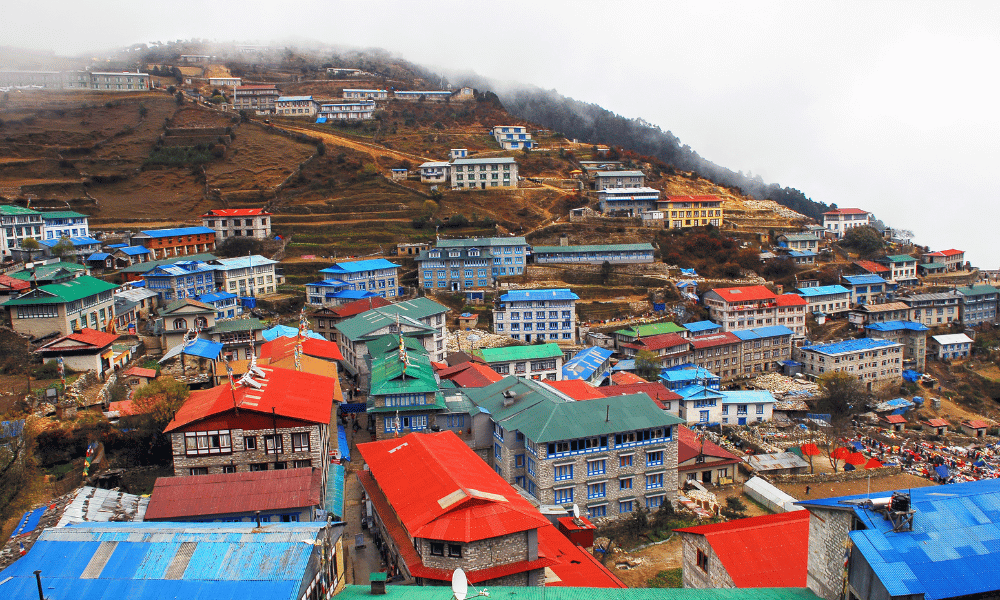
Helicopter: Chartering a helicopter is another option to reach Lukla Airport, particularly if you have a larger budget or if the weather conditions make flying in a fixed-wing aircraft difficult. Helicopters can offer a more flexible schedule and can often fly in a broader range of weather conditions. Several companies offer helicopter charter services from Kathmandu to Lukla. The flight duration is approximately 45 minutes to 1 hour, depending on the helicopter type and weather conditions.
Trekking: For adventure enthusiasts who prefer a more immersive experience, reaching Lukla on foot is also an option. This approach involves starting your trek from Jiri or Salleri in the lower Solu region and trekking to Lukla over several days. The trek from Jiri to Lukla takes approximately 7-8 days, while the trek from Salleri takes about 3-4 days. This option allows you to acclimatize better to the altitude and experience the stunning landscapes and local culture along the way. Keep in mind that this option requires a higher level of physical fitness and a more extended timeframe.
The most common way to reach Lukla Airport is by taking a short domestic flight from Kathmandu. However, alternative options such as chartering a helicopter or trekking to Lukla are available for those seeking a different experience or faced with challenging weather conditions. It is essential to consider your preferences, budget, and time constraints when choosing the best method to reach Lukla Airport.
When planning your flight to Lukla Airport, it's essential to consider the unique challenges and conditions associated with flying in the Everest region. Here are some tips for booking flights and managing potential delays:
Book your flights early: During the peak trekking seasons (March-May and October-November), flights to Lukla can fill up quickly. It's a good idea to book your flights well in advance to secure a seat and avoid disappointment.
Plan for potential delays: Given the unpredictable weather conditions and the fact that Lukla Airport operates under visual flight rules (VFR), it's crucial to factor in extra time for potential delays or cancellations. It's wise to have a flexible schedule and be prepared to adjust your travel plans if necessary.
Choose a reputable airline: Book your flight with a reputable domestic airline that has a proven safety record and experience operating flights to and from Lukla Airport. These airlines prioritize safety and employ pilots with specialized training and experience navigating the challenging conditions at Lukla.
Be aware of luggage restrictions: Due to the small size of the aircraft and the challenging flying conditions, there are usually strict weight limits on luggage. Make sure to check the luggage allowance for your flight and pack accordingly.
Scenic views: As you fly towards Lukla, you'll be treated to stunning views of the Himalayas and the lush valleys below. Make sure to have your camera ready to capture the breathtaking scenery.
Turbulence: Due to the mountainous terrain and weather conditions, turbulence can be expected during the flight. Stay calm and follow the crew's instructions, ensuring your seatbelt is securely fastened when required.
Short and thrilling landing: As the aircraft approaches Lukla Airport, you'll experience a short and exhilarating landing on the steeply inclined runway. The pilot will expertly navigate the surrounding mountains, making a swift descent onto the short runway. The landing can be a thrilling experience, but rest assured that the pilots are highly skilled and trained to handle these conditions.
High altitude: Upon arrival at Lukla Airport, you'll immediately notice the altitude, which is approximately 2,845 meters (9,334 feet) above sea level. It's essential to give yourself time to acclimatize to the high altitude before starting your trek in the Everest region. Take it easy, stay hydrated, and follow your guide's recommendations to minimize the risk of altitude sickness.
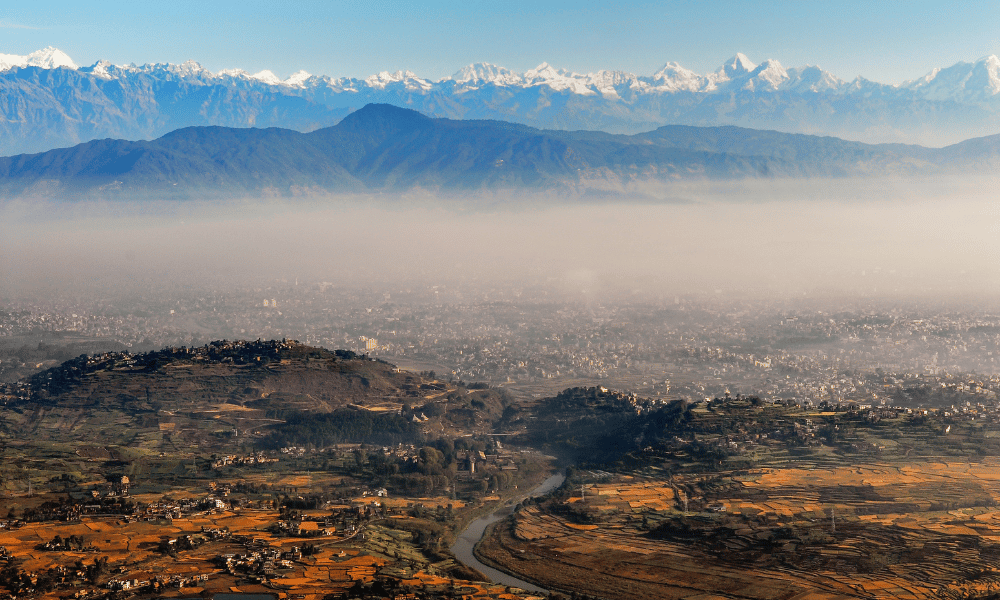
When preparing for your flight to Lukla Airport, it's essential to book with a reputable airline, plan for potential delays, and be aware of luggage restrictions. During the flight and landing experience, enjoy the breathtaking views, expect some turbulence, and remember that the pilots are well-trained to handle the challenging conditions. Finally, take time to acclimatize to the high altitude upon arrival to ensure a safe and enjoyable trek in the Everest region.
Lukla serves as the starting point for many treks in the Everest region and offers various attractions and activities for visitors. Here are some popular things to do in Lukla, along with recommendations for accommodations and dining:
Explore the village: Take a walk around Lukla and familiarize yourself with the local Sherpa culture. The village offers a glimpse into the daily lives of the people living in the region, as well as their customs and traditions.
Visit local monasteries: Lukla has several monasteries worth visiting, such as the Tenzing-Hillary Monastery, which is dedicated to the first Everest summiteers. The monasteries are not only architecturally impressive but also offer a serene atmosphere for reflection and meditation.
Acclimatization hikes: To help you acclimatize to the altitude, consider taking short hikes around Lukla. These hikes offer beautiful views of the surrounding mountains and valleys while allowing your body to adjust to the high altitude.
Shopping: Lukla has a few shops where you can purchase local handicrafts, souvenirs, or trekking gear if needed. Keep in mind that prices in Lukla are generally higher than in Kathmandu due to the remote location and transportation costs.
Lukla has several guesthouses and lodges catering to trekkers and tourists. Some popular accommodations include:
Yeti Mountain Home Lukla: This comfortable lodge offers well-appointed rooms with private bathrooms and hot showers. The property also features a restaurant and a cozy common area with a fireplace.
The Nest at Lukla: This guesthouse offers clean and comfortable rooms with shared or private bathrooms. The property also has a garden and a restaurant serving a variety of local and international dishes.
Lukla Numbur Hotel: This budget-friendly option offers basic but clean rooms with shared bathroom facilities. The hotel also has a restaurant serving Nepali and international cuisine.
For dining, many guesthouses and lodges in Lukla have their own restaurants serving a variety of local and international dishes. Some popular places to eat include:
Namaste Lodge and Restaurant: This restaurant offers a selection of Nepali, Indian, and Western dishes, along with freshly baked goods.
Sunny Garden Restaurant: Located in the Nest at Lukla, this restaurant serves a variety of local and international cuisine, including vegetarian options.
Khumbu Lodge Restaurant: This restaurant is part of the Khumbu Lodge and offers a cozy atmosphere and a variety of dishes, ranging from traditional Nepali cuisine to Western options.
While in Lukla, you can explore the village, visit local monasteries, embark on acclimatization hikes, and shop for souvenirs or trekking gear. For accommodations and dining, consider staying at one of the guesthouses or lodges mentioned above, and enjoy a variety of local and international dishes at their restaurants.
Lukla Airport, also known as Tenzing-Hillary Airport, holds significant importance for trekkers and climbers heading to the Everest region. Its strategic location serves as the primary gateway to the area, providing access to popular trekking routes and Everest Base Camp. The key points highlighting the significance of Lukla Airport for Everest trekkers and climbers are:
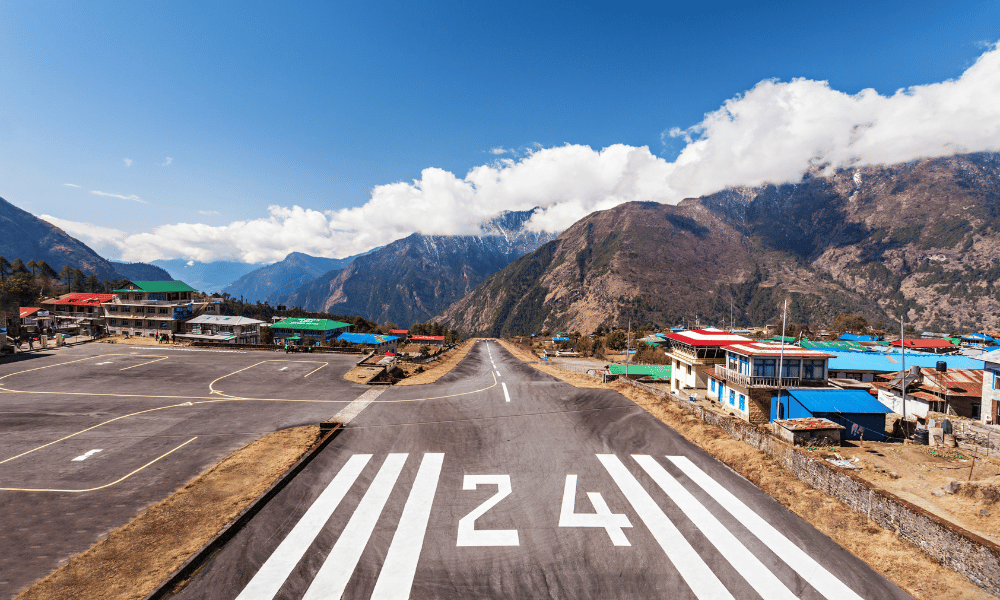
Accessibility: Lukla Airport is the most convenient and quickest access point to the Everest region. It connects the remote Himalayan area with Kathmandu, the capital city of Nepal, through a 30-minute flight. This short flight significantly reduces the travel time compared to alternative options, such as trekking from Jiri or Salleri.
Starting point: For most trekkers and climbers, Lukla serves as the starting point of their journey in the Everest region. From Lukla, various trekking routes lead to popular destinations like Namche Bazaar, Gokyo Lakes, and ultimately, Everest Base Camp.
Acclimatization: Lukla Airport, situated at an altitude of 2,845 meters (9,334 feet), provides an initial acclimatization opportunity for trekkers and climbers before embarking on their journey. Spending time in Lukla allows them to adjust to the high altitude, minimizing the risk of altitude sickness.
Local economy and tourism: The airport plays a crucial role in supporting the local economy and tourism in the Everest region. It facilitates the arrival of tourists, which in turn creates job opportunities and generates income for the local Sherpa community.
Lukla Airport is of significant importance for Everest trekkers and climbers, as it provides convenient access to the region, serves as the starting point for various trekking routes, offers an initial acclimatization opportunity, and supports the local economy and tourism.
Lukla Airport, also known as Tenzing-Hillary Airport, is not only a vital gateway to the Everest region but also offers a thrilling and adventurous experience for travelers. Its unique location, challenging flying conditions, and breathtaking mountain views make the journey to Lukla Airport an unforgettable part of any adventure in the Himalayas.
The thrilling and adventurous nature of the airport experience can be attributed to the following factors:
Challenging conditions: Lukla Airport's high altitude, short runway, and steep incline, along with the surrounding mountainous terrain, make it one of the most challenging airports in the world for pilots. The exhilarating experience of landing and taking off at Lukla Airport is an adventure in itself, showcasing the exceptional skills of the pilots who navigate these conditions.
Unpredictable weather: The unpredictable weather in the region adds to the excitement of flying to Lukla Airport. Flights are subject to rapid changes in weather conditions, requiring pilots to make quick decisions and adapt their approach to ensure safe landings and takeoffs.
Scenic views: The flight to Lukla Airport offers passengers breathtaking views of the Himalayas and the lush valleys below, setting the stage for an unforgettable adventure in the Everest region.
Sense of accomplishment: Successfully arriving at Lukla Airport can be seen as an achievement, given the challenging conditions and the airport's reputation as one of the most dangerous in the world. This experience instills a sense of accomplishment and excitement, setting the tone for the adventure ahead in the Everest region.
In conclusion, the experience of traveling to and from Lukla Airport is undeniably thrilling and adventurous. The challenging conditions, unpredictable weather, scenic views, and sense of accomplishment all contribute to making the journey to Lukla Airport an essential part of any adventure in the Everest region.
Lukla Airport is located at an altitude of 2,845 meters (9,334 feet) above sea level.
Lukla Airport is considered dangerous due to its short runway, steep incline, surrounding mountainous terrain, and unpredictable weather conditions. These factors make it challenging for pilots to land and take off, requiring specialized training and experience.
The runway at Lukla Airport is just 527 meters (1,729 feet) long, with a gradient of 11.7%.
Several domestic airlines operate flights to Lukla Airport, including Tara Air, Summit Air, Sita Air, and occasionally Nepal Airlines.
The flight duration from Kathmandu to Lukla Airport is approximately 30 minutes.
Yes, flights to Lukla Airport can be frequently delayed or canceled due to unpredictable weather conditions and the airport's operation under visual flight rules (VFR). It's important to have a flexible schedule when planning your trip to the Everest region.
Small, fixed-wing STOL (Short Takeoff and Landing) aircraft such as the DHC-6 Twin Otter, Dornier Do 228, and Let L-410 Turbolet are commonly used for flights to Lukla Airport.
Alternative options to reach Lukla include chartering a helicopter or trekking from Jiri or Salleri in the lower Solu region. The trek from Jiri to Lukla takes approximately 7-8 days, while the trek from Salleri takes about 3-4 days.
It is recommended to book your flights to Lukla Airport well in advance, especially during the peak trekking seasons (March-May and October-November), as flights can fill up quickly.
Lukla Airport has a small terminal building with basic facilities, including a waiting area, restrooms, and a check-in counter. There is no ATM at the airport, so it's essential to bring enough cash for your trek.